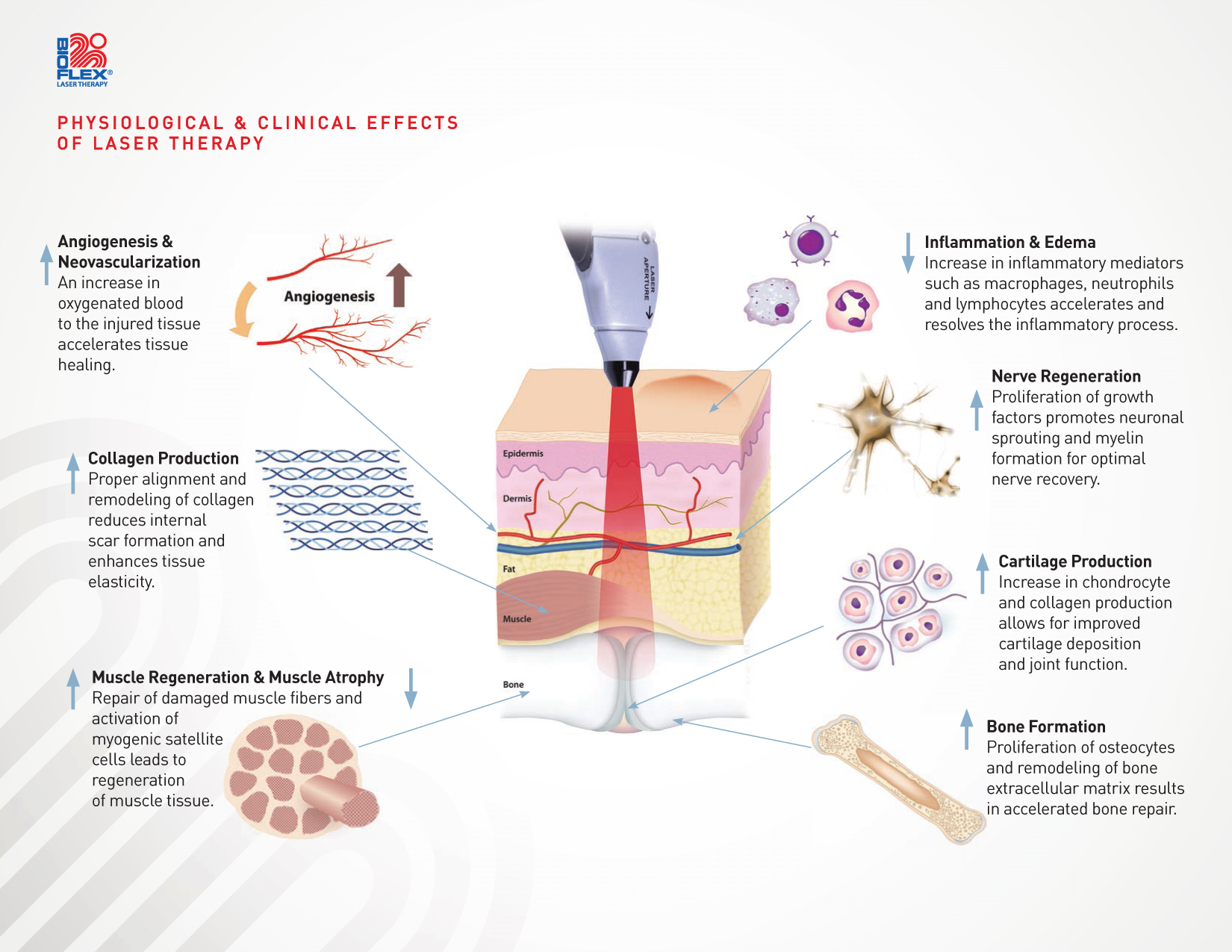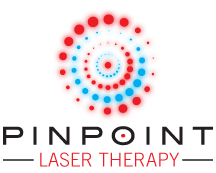BioFlex Laser is a Cold Laser or Low Level Laser used for laser therapy. BioFlex Laser Therapy is a treatment that utilizes specific wavelengths of light to interact with tissue and is thought to help accelerate the healing process. It can be used on patients who suffer from a variety of acute to chronic conditions in order to help eliminate pain, swelling, reduce spasms and increase functionality.
What Is BioFlex Laser Therapy?
How Cold Lasers Work
Cold lasers are handheld devices used by the clinician and are often the size of a flashlight. The laser is placed directly over the injured area for 30 seconds to several minutes, depending on the size of the area being treated and the dose provided by the cold laser unit.
During this time, the non-thermal photons of light that are emitted from the laser pass through the skins layers (the dermis, epidermis, and the subcutaneous tissue or tissue fat under the skin). This light has the ability to penetrate 2 to 5 centimeters below the skin at 90mw and 830 nm.
Once the light energy passes through the layers of skin and reaches the target area, it is absorbed and interacts with the light sensitive elements in the cell. This process can be compared to photosynthesis in plants – sunlight is absorbed by plants, which is then converted to usable energy so that the plant can grow.
When cells absorb this light energy, it initiates a series of events in the cell that is theorized to eventually result in normalizing damaged or injured tissue, a reduction in pain, inflammation, edema and an overall reduction in healing time by increasing intracellular metabolism.
Physiological and Clinical Effects of Laser Therapy:

The Overall Benefits of Laser Therapy:
Rapid Cell Growth
Laser light accelerates cellular reproduction and growth.
Faster Wound Healing
Laser light stimulates fibroblast development and accelerates collagen synthesis in damaged tissue.
Increased Metabolic Activity
Higher outputs of specific enzymes, greater oxygen and food particle loads for blood cells and thus greater production of the basic food source for cells, Adenosine Tri-Phosphate (ATP).
Reduced Fibrous Tissue Formation
Laser light reduces the formation of scar tissue following tissue damage from: cuts, scratches, burns or post surgery.
Anti-Inflammatory Action
Laser light reduces swelling caused by bruising or inflammation of joints to give enhanced joint mobility.
Increased Vascular Activity
Laser light induces temporary vasodilation increasing blood flow to damaged areas.
Stimulated Nerve Function
Slow recovery of nerve function in damaged tissue can result in “dead” limbs or numb areas. Laser light speeds the process of nerve cell reconnection to bring the numb areas back to life.

